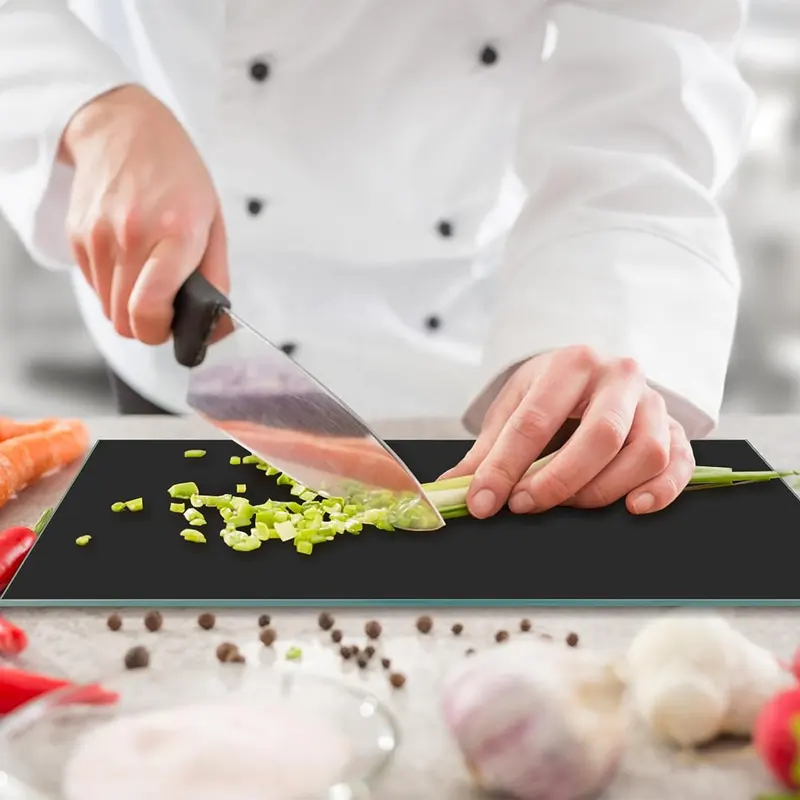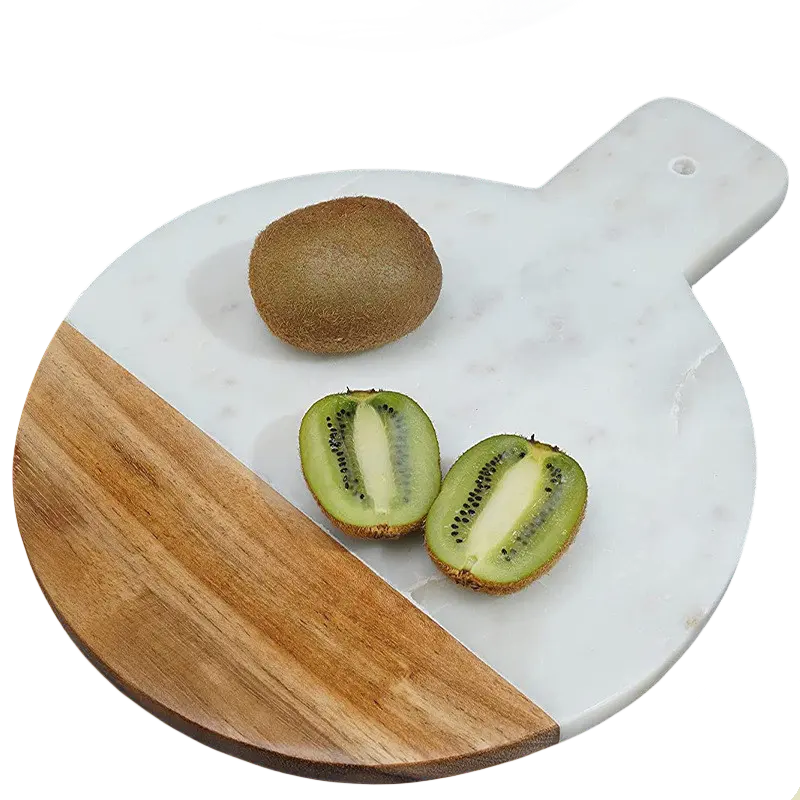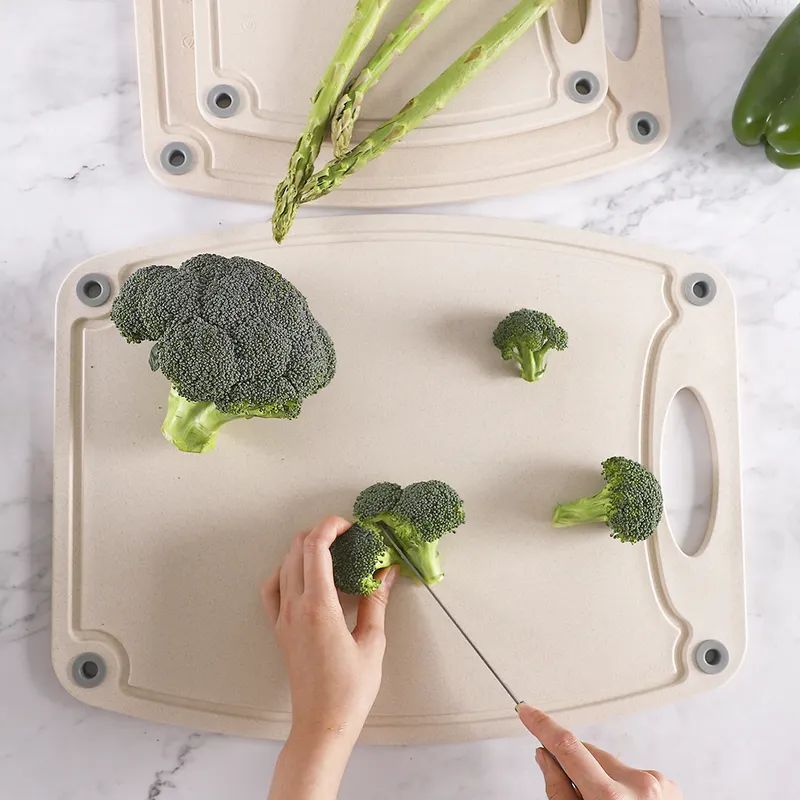When choosing a plastic cutting board, it’s important to consider the material to ensure it meets your specific needs. Here are some common plastic cutting board materials and their characteristics:
- High-Density Polyethylene (HDPE):
- Advantages: HDPE is a popular choice for cutting boards due to its durability, resistance to moisture, and ease of cleaning. It is also resistant to bacteria and doesn’t absorb odors easily.
- Best For: General-purpose cutting boards, especially for cutting meat, vegetables, and fruits.
- Polypropylene:
- Advantages: Polypropylene is another durable and lightweight plastic. It is resistant to moisture, acids, and oils. It is also dishwasher safe.
- Best For: Versatile use in the kitchen, suitable for cutting various types of food.
- TPE (Thermoplastic Elastomer):
- Advantages: TPE cutting boards are known for their flexibility and anti-slip properties. They are also gentle on knife blades.
- Best For: Those who prefer a more flexible cutting surface and want to minimize the impact on knives.
- BPA-Free Plastics:
- Advantages: BPA-free plastic cutting boards are considered safer for food preparation. They are free from harmful chemicals like bisphenol A (BPA).
- Best For: Health-conscious individuals who want to avoid exposure to BPA.
- Composite Materials:
- Advantages: Some cutting boards are made from a combination of materials, such as wood fibers and plastic resins, creating a board that is both durable and aesthetically pleasing.
- Best For: Those looking for a balance between the benefits of plastic and wood.
When choosing a plastic cutting board, also consider factors such as size, thickness, and whether it has features like non-slip edges or built-in juice grooves. Remember to follow the manufacturer’s care instructions to ensure the longevity and hygienic properties of the cutting board. Regular cleaning, proper maintenance, and timely replacement of worn-out boards contribute to a safer and more enjoyable cooking experience.



